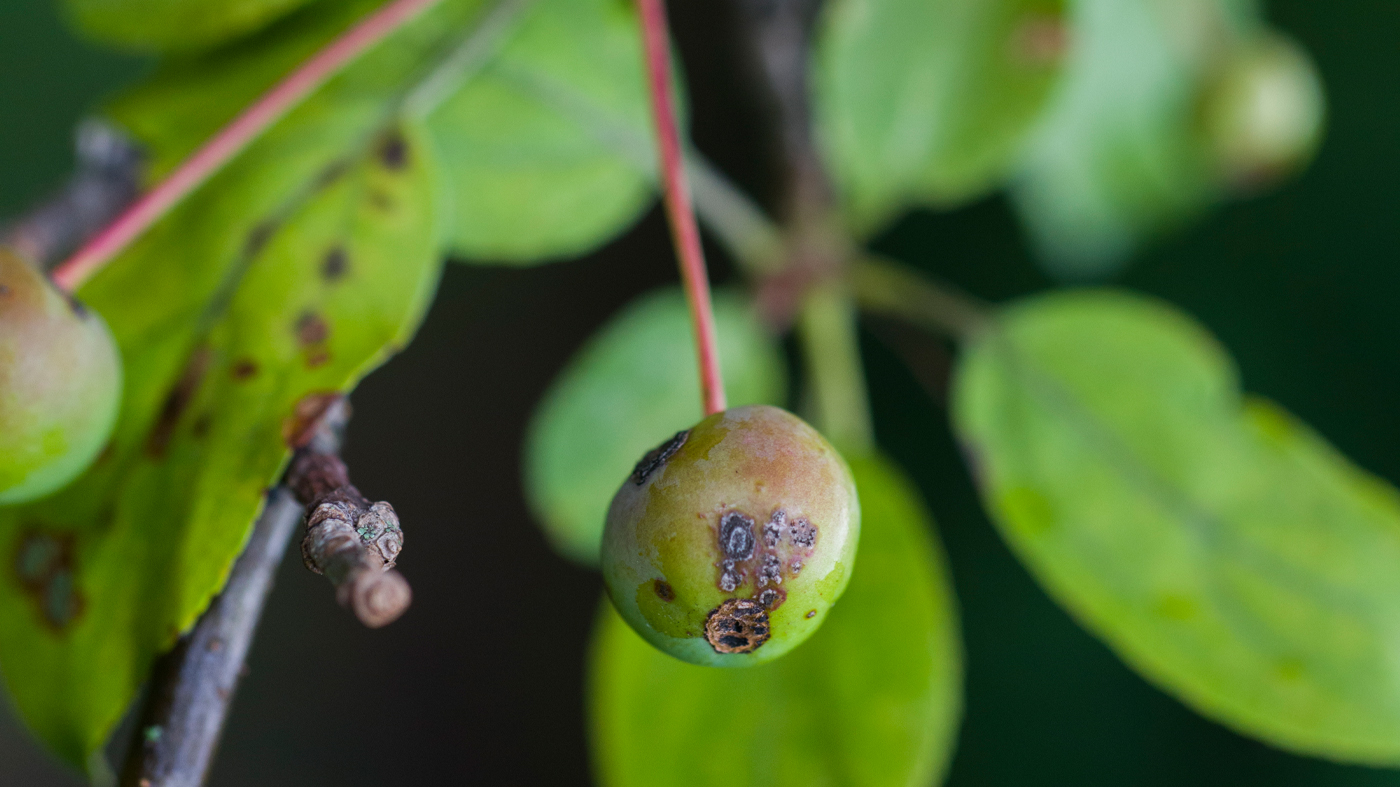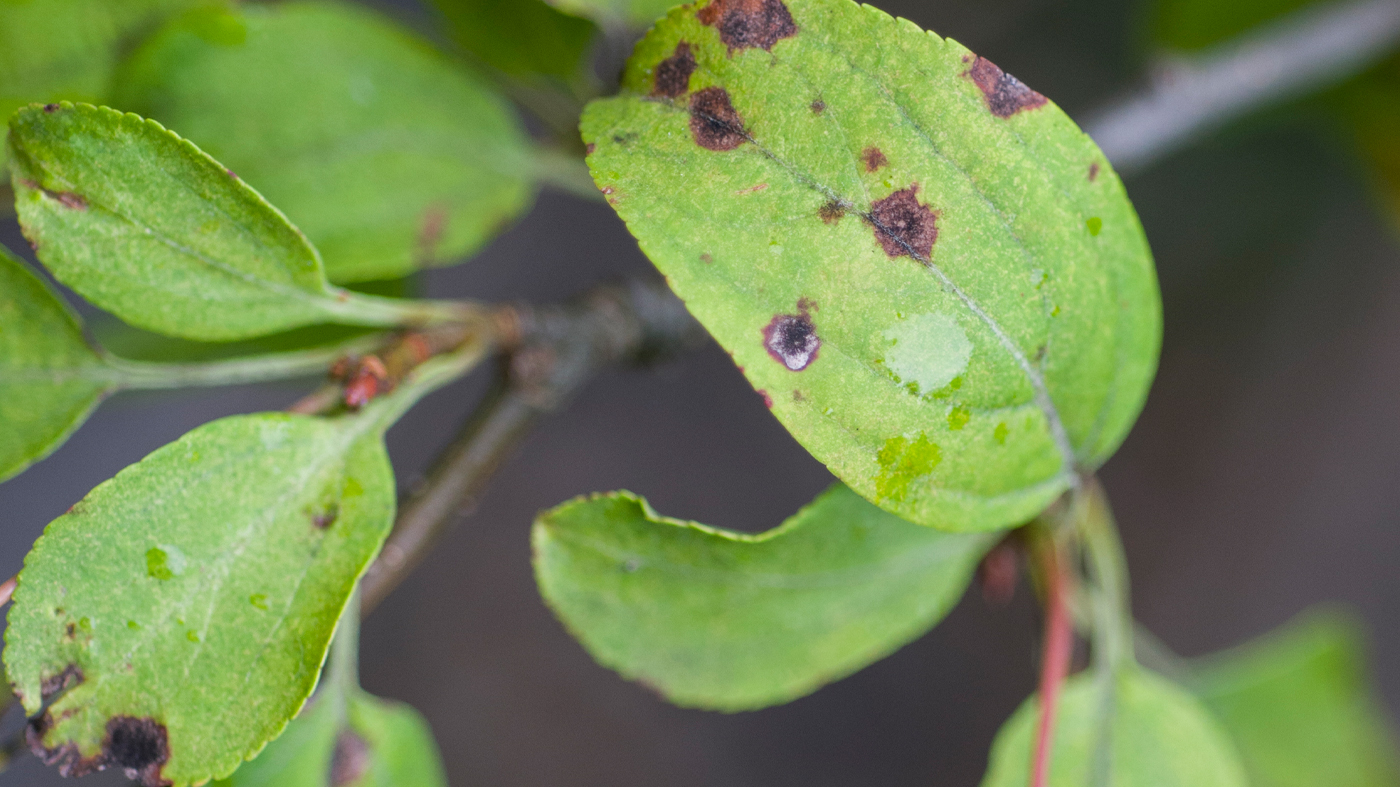Susceptible Plants
Crabapple (Malus), apple (Malus), pear (Pyrus), firethorn (Pyracantha)
Description & Symptoms
Apple scab is a common fungal infection of crabapple and apple trees. Small, pale green spots appear on the edges and surfaces of leaves which soon enlarge and turn brown. Leaves will eventually yellow and drop. Apple Scab can also affect fruit, appearing first as pale green lesions that darken and crack.
Timing & Life Cycle
Spring temperatures and rain trigger the release of the fungal spores that cause apple scab. Cool, wet springs typical of the Chicago area favor the disease, which is extremely common among ornamental crabapples and fruiting apple trees. Spores land on the delicate tissue of newly opened leaves and send threadlike structures into the leaf, causing the characteristic brown/black spots. The fungus matures over the growing season, producing spores that reinfect the tree. Spores overwinter on fallen leaves on the ground and are released in the spring to start the cycle all over again.
Damage
Although unsightly, apple scab rarely kills a tree. However, severe cases can cause complete defoliation by early summer. Infected fruit usually drops prematurely. Repeated severe infections weaken trees, leaving them vulnerable to other disease and insect problems.
Treatment & Solutions
Crabapple trees must be planted in full sun. When planting an apple or crabapple tree, choose a resistant variety that is less susceptible to apple scab. Resistant varieties may become lightly infected, especially during extremely cool, wet springs but should not become severely infected. Removing fallen leaf and fruit debris also reduces the quantity of fungal spores that may cause reinfection. Carefully thin the branches of a tree to increase air circulation, which helps to control infections. Preventive fungicide treatment may be warranted in some cases.
For recommended chemical treatments of apple scab and a list of disease-resistant crabapple trees, please contact Plant Information Services at (847) 835-0972 or show email address.



